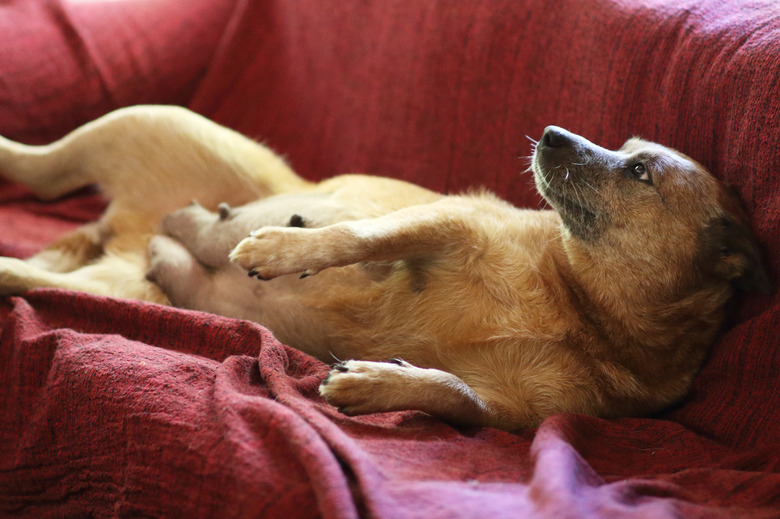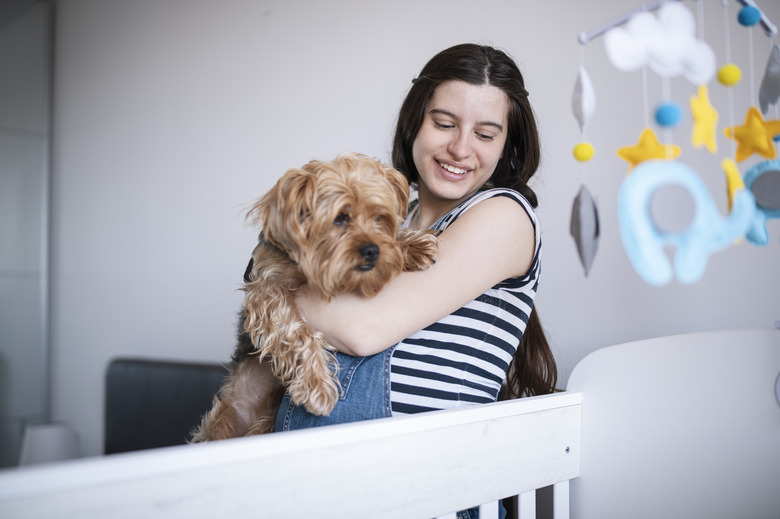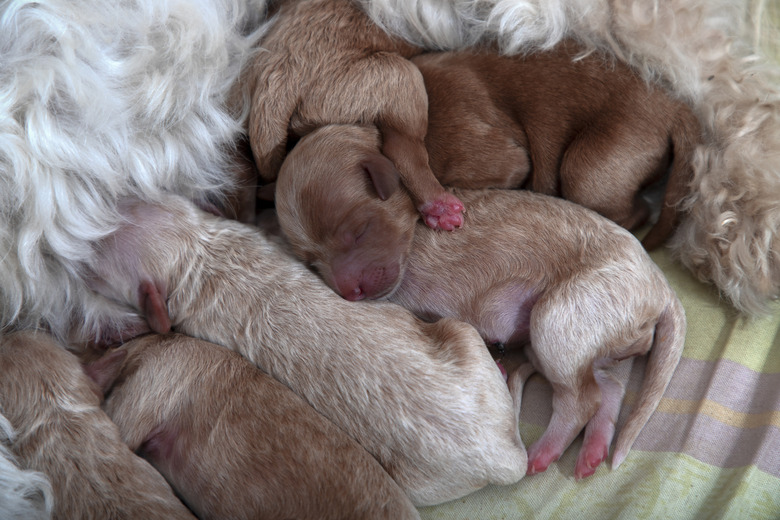How To Know When A Pregnant Dog Is Having Contractions
When your pregnant dog is getting close to her due date, you'll start to notice several signs that she's preparing to deliver her puppies. With an understanding of canine pregnancy and the birthing process, you'll be able to give your dog what she needs before, during, and after labor.
One of the signs of labor is contractions. But how can you tell when they've started? You can learn how to know when your dog is having contractions. Use this information along with guidance from your veterinarian to support your canine companion, keep her comfortable, and look out for problems that require veterinary attention.
Body temperature during dog labor
Body temperature during dog labor
In dogs, gestation can be 58 to 68 days long. For example, your dog might give birth on day 63. So, if you know when your pet got pregnant, you can start to keep a closer eye on her at around 58 days.
Your veterinarian can help you figure out when your dog is likely to give birth. Then, in the week prior to the expected due date, you can take your dog's temperature twice a day with a rectal thermometer to see when she's close to going into labor. Do so at the same time each day to track her body temperature.
A dog's normal temperature is around 101 to 102.5 degrees Fahrenheit. Once you notice that her temperature has dipped to around 98 to 99 degrees Fahrenheit, you can anticipate that she'll go into labor and start having contractions within 24 hours.
Changes in appetite and behavior during dog pregnancy
Changes in appetite and behavior during dog pregnancy
During the first stage of labor, which may last up to 12 hours, you will notice that your dog starts to behave differently. She might appear anxious and restless, and she might pant and pace. Her appetite will decrease to the point that she refuses to eat, and she might vomit. Also, you might notice her shivering.
In addition, there will be nesting behavior, which involves finding a safe and comfortable spot where she'll be able to deliver puppies with the least amount of stress. You can set up a whelping box in advance so she can go to it whenever she's ready, and you'll be able to monitor her easily. However, if your dog is showing signs that she'd prefer giving birth in another area, move the nesting box for her.
The dog's uterine contractions
The dog's uterine contractions
You may not notice contractions during the first stage, but during the second stage of labor when the first puppy is ready to be delivered, you'll likely be able to see and feel the changes in your dog's abdomen as it becomes tense with strong contractions. Also, you will see her straining as she works on pushing out the puppy.
Your dog might push for about 15 minutes before delivering a puppy, and there might be up to an hour between puppies. Also, she may take a break with a resting period that might last two to four hours before delivering more.
If your veterinarian took X-rays to determine the number of newborn puppies to expect, it will be easier to know when your dog is finished giving birth to her litter.
Complications during the dog's delivery
Complications during the dog's delivery
A dog will instinctively know what to do, but sometimes, she'll need help or require emergency veterinary care.
For instance, if her temperature drops but she doesn't go into labor within 24 hours, contact your veterinarian to let them know. Also, symptoms of complications during delivery include straining hard without delivering a puppy, having trouble pushing out a puppy completely, stopping to rest for too long between puppies, and failing to deliver a placenta for each puppy.
The best way to know what to look for and when to call for help is by discussing canine labor with your veterinarian. Then, keep their phone number within reach at all times. That way, you'll be able to act right away if complications occur.
The bottom line
The bottom line
Watching a pregnant dog give birth for the first time can be exciting, and knowing when your dog is having contractions can make it easier for you to support her through the birthing process. Therefore, it's wise to be fully prepared. In the event that something goes wrong, it's necessary to take action immediately by contacting your veterinarian for assistance.


